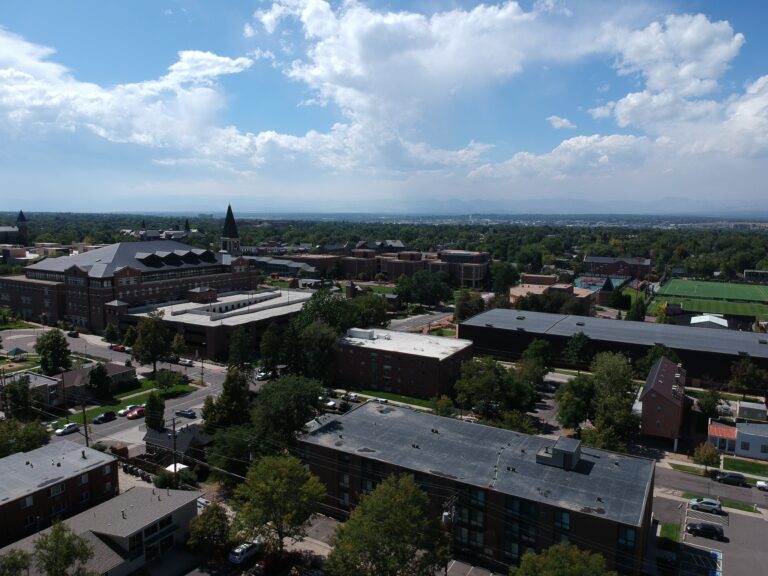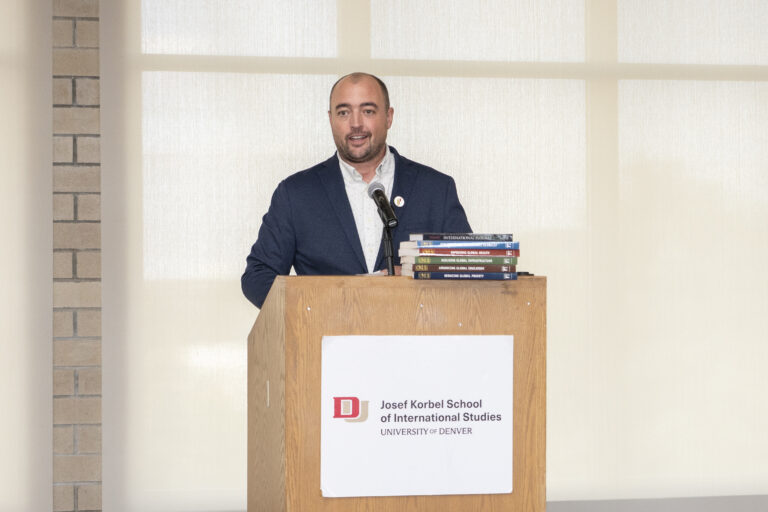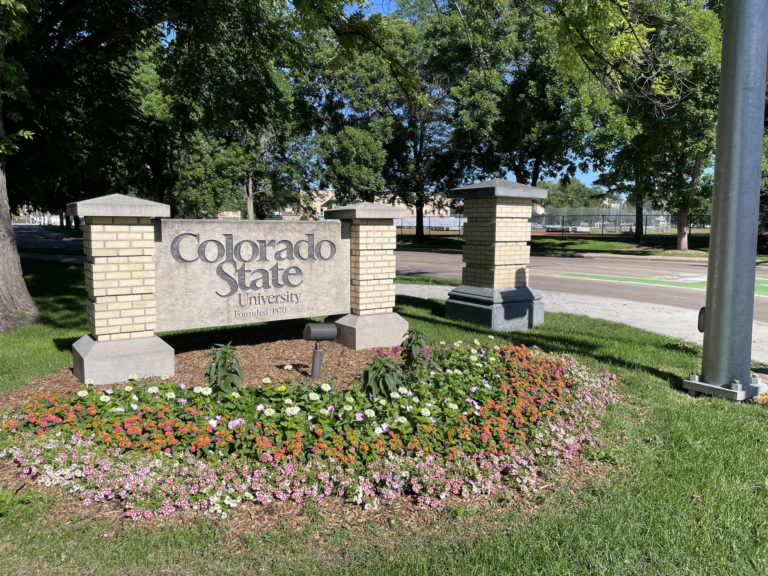Colorado’s top universities have contributed to the state’s life-sciences cluster by churning out new life sciences companies based on related research and attracting companies to the area that want to take advantage of the research. Here’s a snapshot of the different types of life-sciences research going on at the state’s premier research institutions.
Colorado State University
CSU’s life-science research includes the study of gene duplication, gene expression and genetics. One example of that fundamental research is examining individual molecules.
“When you can look at one individually, you can get properties you can’t get in an ensemble. A team can look at individual proteins and understand how they are made,” said Santiago Di Pietro, associate dean for research for the College of Natural Sciences.
Cell biology is another broad area of study at the university. But instead of studying individual molecules, it studies individual cells and how they divide.
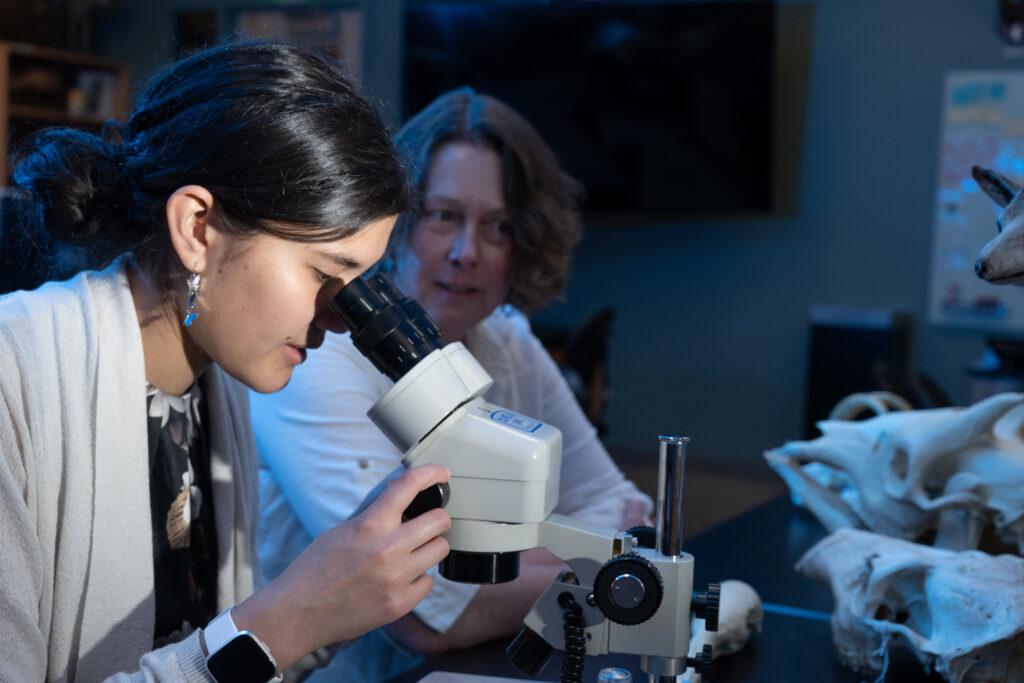
“Those principles apply in cancer. Some processes they study, when they go wrong in people, typically cancer develops,” he said.
In his own lab, Di Pietro studies cell signaling, which looks at cell functions, including endocytosis and specialized cell compartments that have implications for bleeding and pigmentation disorders. Another area of focus is neuroscience and neurobiology or how neurons work at a fundamental level. When they don’t work properly, they can cause neurodegenerative disorders, such as Parkinson’s Disease.
CSU is well known for its work on infectious diseases, including research on mycobacteria, which is the cause of tuberculosis. The Mycobacteria Research Labs lead fundamental and translational research to understand mycobacterial diseases and pathogens and innovate models of disease, diagnostics, therapeutics, and vaccines.
The Prion Research Center studies the biochemistry, genetics and pathogenesis of prions, which are thought to cause incurable and other fatal diseases in humans and animals, including bovine spongiform encephalopathy, Creutzfeldt-Jakob disease, chronic wasting disease and Scrapie.
Several companies have come out of CSU research labs, including Burst Diagnostics LLC, which was started by Dr. Chuck Henry in the chemistry department and develops biosensors for bacteria and viruses. Henry also has secured funding from other companies to do work in his lab, including Legacy Biosciences, which synthesizes peptides. Peptides in a body regulate processes such as glucose levels in the bloodstream.
If someone at CSU wants to pursue a patent or license a procedure, they would do it through STRATA, a nonprofit corporation that supports CSU through intellectual property and technology transfer services.
University of Colorado Boulder
Last year, 35 startup companies came out of CU-Boulder, about half of those in life sciences. Some of the university’s research strengths that have turned into startup activity include DNA/RNA biology, biomaterials, and neuroscience.
The BioFrontiers Institute at CU got its start 20 years ago as a way to bring different life sciences departments and researchers together in one place for multidisciplinary scientific collaborations.
One of its biggest focuses is on regenerative biology, how to help older people manage the many downsides to aging.
“We want a healthy population. We have traditional strengths in tissue engineering and cell biology. Those are the companions you want for solving regenerative medicine problems,” said Kristen Bjorkman, director of interdisciplinary research for the BioFrontiers Institute.
Instead of someone needing to have their knee replaced, the Institute is researching ways to grow new cartilage or cure osteoarthritis instead of treating the pain that comes with it. The same for someone who has a heart attack. If there is a dead patch in their heart that doesn’t come back by itself, researchers are working on building a material that has the strength and elasticity of a healthy heart and would be a healthy environment for new cells to grow and latch onto, that can stick to the heart, like a living bandage, she said.
The Institute also studies degenerative diseases, trying to understand why tissues degenerate in the first place. Alzheimer’s disease and other neurodegenerative diseases are a primary focus. Researchers at CU are trying to determine why they happen, what drives the degenerative process and how it can be stopped, Bjorkman said. If these degenerative processes are caught in the early stages, it is possible to stop them or at least slow them down.
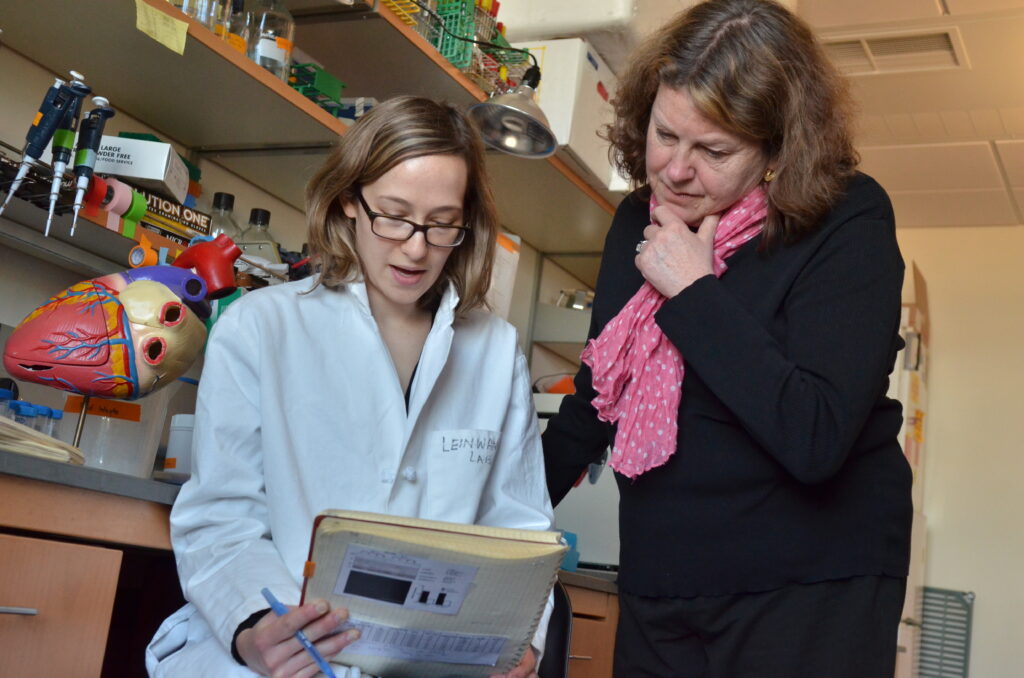
CU researchers believe it is important to know what is going on in a person’s brain before it is too late to intervene. They are studying ways to protect a person’s healthy neurons to help stop degenerative disease progression.
Parasites and pathogens are another focus of the Institute. Professor Bob Garcea, a physician and virologist, has worked with Chemical & Biological Engineering professor Ted Randolph to develop the next generation of vaccines that are heat stable, effective and don’t require booster doses. They founded a company called Vitrivax Inc. that has received funding through the Gates Foundation and the Department of Defense.
“That relationship has grown and sponsored research at the university,” said Hannah Nelson, associate director of licensing at CU Venture Partners, the organization in charge of translating university innovations into new companies or helping researchers to connect their innovations with existing companies. “That is our hope as well. We help companies grow, and they give back to the university ecosystem and grow the cluster.”
Fifteen companies have come out of the BioFrontiers Institute in the past 20 years, founded by professors, graduate students or post docs. The Institute also rents space within the building for companies that want to do scientific research and take advantage of the facility’s state-of-the-art equipment and intellectual capital.
Venture Partners also works with different resources in the community, such as the Colorado BioScience Association and Innosphere Ventures, to bring industry and academia together. That includes cross-campus collaborations that result in new commercial opportunities or new companies, she added.
University of Colorado Anschutz Medical Campus
The CU Anschutz campus has grown to 5,000 faculty members over the last 20 years, including research and clinical faculty. The university has several bioscience buildings that are “great incubators for faculty startups or bio companies that want to be near the medical center,” said Dr. Thomas Flaig, vice chancellor of research at CU Anschutz Medical Campus.
The university is known for its NCI-designated Cancer Center, which offers clinical care and a research component. A manufacturing facility in the Science and Technology Park, adjacent to campus, produces cellular products for human use and human clinical trials.
“There are hundreds of labs there, people producing ideas we can use in a cancer setting, the Gates Biomanufacturing Facility to develop manufacturing protocols, run clinical trials and test therapies in patients with cancer,” Flaig said.
Other areas of research include improving the lives of military service members and their families. The CU Center for Combat Medicine and Battlefield Research tries to solve the military’s toughest medical challenges. Much of its research can be applied to civilians as well.
Anschutz is nationally known for its diabetes research, understanding the mechanisms of the disease, treatments and how to monitor treatments for patients. Mental health research explores the effectiveness of deep brain stimulation, OCD and the underlying causes of depression and anxiety.
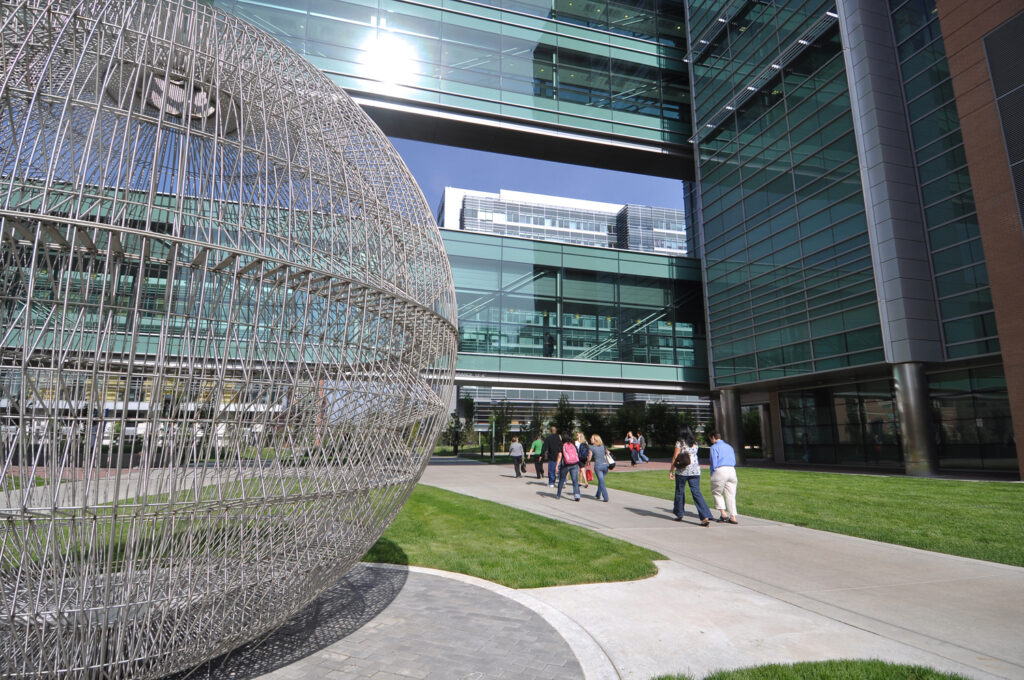
Another area of expertise is Down Syndrome research. Scientists are studying how to promote optimal health for Down Syndrome patients. “Certain illnesses are more prevalent in Down Syndrome, and some are less prevalent. Some forms of cancer are less prevalent in Down Syndrome. What changes? How can we improve their lives and learn about the disease itself?” he said.
“More than 10% of sponsored research funding comes from companies,” he said. That includes clinical trial ideas and pharmaceutical development.
“Think about the research that takes place on our campus, from basic discovery, RNA and DNA genetics to population-based research,” Flaig said. “How do we impact the health of the population, of individuals? What interventions can we take?”
University of Denver
The University of Denver has made a name for itself in advanced cell technology and advanced imaging techniques.
“We are doing a lot of great things that often people in Colorado don’t know about,” said Joe Angleson, chair of the DU Department of Biological Sciences.
The university’s big strength is in biomedical research with many National Institutes of Health-funded researchers. One area of growth is in biophysics. Associate Professor Schuyler Van Engelenburg is well known for his work in imaging. He has built three separate microscopes that allow researchers to observe individual single molecules in intact living cells, Angleson said. Traditional light microscopy has a limited resolution of 200 nanometers, he said. What Engelenburg has built can take that down to 10 nanometers, allowing sophisticated analysis of proteins in intact cells.
His lab is developing cutting-edge multidisciplinary techniques to understand the host-viral interface on a molecular level. This includes advanced superresolution microscopy techniques, protein chemistry and probe development, and computational image analysis to quantitatively understand the cellular, biochemical, and genetic drivers of HIV-1 assembly.
The university also conducts research on aspects of RNA biology, including the study of RNA granules that store and transport RNA molecules.
Briony Catlow, director of the Knoebel Institute for Healthy Aging at DU, says that the university has really invested in aging research because 10,000 people every day are turning 65. “By 2030, about 20% of the population will be over age 65. That is not a problem if everyone is in good health,” she said, “but more than 90% of people over age 65 have one chronic health condition.”
Much of the research conducted at the Institute focuses on understanding the biological mechanisms that lead to disease and aging, how scientists can detect neurodegenerative diseases earlier than when symptoms appear and develop therapeutics to treat disease, she said.
“One of the exciting things about the space we’ve created is there’s not this siloed idea of approaching aging and making healthy aging,” Catlow said. The Institute is about interdisciplinary connections between synthetic and biochemists, cell biologists, mechanical and electrical engineers that all share lab space and collaborate together.
“You are able to push the boundaries on experiments because you are collaborating with people who can help answer questions,” she said.
Angleson said “We put investment and energy into recruiting excellent researchers. Part of that mission is doing biomedical research, which brings in substantial grant dollars and technology development. For us, being an institution with grad programs and large undergraduate programs with a large number of students interested in pre-health careers, it is important for our teaching mission as well.”
University of Northern Colorado
UNC is best known as a teaching college, so many people don’t realize that biology is the second-largest major on campus, said Kamel Haddad, dean of the college of Natural and Health Sciences at UNC. “UNC science is the best-kept secret. There are fantastic things going on,” he said.
One of those is the Cancer Rehabilitation Institute that looks at how exercise can help cancer survivors and what physiological adaptations occur as they do exercise training. Reid Hayward, professor of sport and exercise science, is director of the Institute, which also uses tumor-bearing rodent models to study the effects of exercise on various physiological systems, with particular emphasis on the cardiovascular, muscular and immune systems.
David Hydock, professor and chair of the Department of Kinesiology, Nutrition and Dietetics, investigates mechanisms behind cancer treatment-related toxicities with a specific interest in skeletal weakness and fatigue and how exercise and nutritional interventions play a part in battling this debilitating side effect. His lab also studies the physical activity levels of transgender individuals and the role that physical activity plays in their mental and physical health.
Other areas of research include mast cells, stem cells, genomics and RNA, and the effects of puberty blockers on transgender youth.
The university’s top two goals are the dissemination of knowledge and the pursuit of knowledge.
“Every faculty member on the tenure track has a research expectation they are evaluated on,” Haddad said. “The promotion of this research is usually better if it is funded by an external federal grant or company or if it is partnered with a company through a patent or technology agreement.”
Earlier this year, UNC partnered with Vantage Hemp and North Carolina AMVETS Service Foundation to research the effect of cannabis on veterans and veterans’ health. The study was a placebo-controlled examination of a daily fixed dose of CBD over 28 days. The goal was to assess the effect of CBD on several factors that negatively impact the day-to-day activities of veterans.
“It used to be that universities dictated where the science goes,” Haddad said. “We still partner in that way, but we are not the only ones who dictate where the science goes. Industry is doing groundbreaking work, and we need to talk to each other.”
UNC’s nursing program is another feather in its cap, ranking 53rd in the nation out of more than 650 undergraduate nursing programs, he added.
